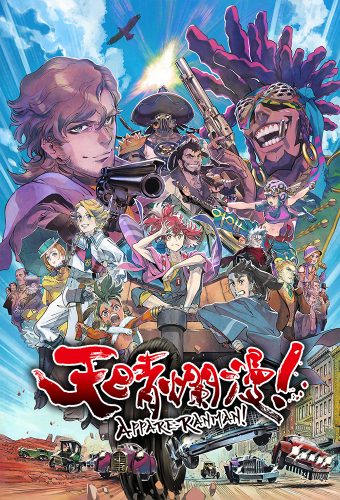
If that title got your attention, then you must be a fan of either the classic Samurai Champloo or the new historical adventure racing anime Appare Ranman! We are fans of both so it was hard to ignore the similarities between the two and the promising future of Appare Ranman.
We’re only on the second episode but Appare Ranman is already giving us a lot of Samurai Champloo vibes and we think that is GREAT! Today we’ll discuss all the similarities between the two anime that we think make Appare Ranman a huge contender to be the Samurai Champloo of a new generation.
It’s Historical (ish)
Samurai Champloo is set in Japan’s Edo period but mixes in hip-hop, street fighting, and modern personalities that make it stand out still to this day. Likewise, Appare Ranman is set at the end of the 19th century but has fantastical car designs and technology that didn’t exist at that time as well as character designs that would not be the norm in that time period. As Appare Ranman director, Masakazu Hashimoto, said in an interview with ANN, the era is more of a backdrop for the adventure and the characters’ development and not meant to be historically accurate. Both directors did an amazing job of marrying modern elements with history.
Perfectly Mismatched Duo
Who can forget the stoic samurai Jin and his troubles journeying alongside the headstrong and unusual Mugen? Kosame may show more emotion than Jin, but he is still a serious, honorable samurai that refuses to put down his sword, and Appare is the source of all his stress but also, the reason for their adventures. Appare isn’t as brash or a brute like Mugen but he really doesn’t give a damn about what others think and basically does what he wants when he wants to. These two character types bring a wonderful balance of drama, philosophy, comedy, and action. Samurai Champloo also has Fuu. We haven’t gotten that far in Appare Ranman but we’re sure someone will be filling that spot.
American Influence
Samurai Champloo has graffiti artists in the Niwa brothers, shows us a baseball game between Japan and America, and of course, hip-hop. The American influence in the anime’s creators and director Shinichiro Watanabe is clear, though it is used a bit more as an allegory for historical events. Besides that, it should be noted that the diversity in Samurai Champloo wasn’t the case in the Edo Period.
In Appare Ranman the influence is more obvious, as the whole plot is a Wild American Race and the whole thing takes place in America. This is a reflection of director Hashimoto’s admitted love for American television. Like with Samurai Champloo, we see a variety of characters from different backgrounds in Appare Ranman, which makes sense with it being set in the USA, but Hashimoto has also mentioned his team is multicultural and he wanted to show how we can all come together toward a common goal.
Style
Perhaps because both titles are original works—meaning they aren’t based on a manga or other source—Watanabe and Hashimoto were able to create them imagining them as anime, without having to adapt anything. This lead to bright colors and unique character designs as well as a style of animation that enhances the action we see on the screen. Appare’s hair is practically the same color as Mugen’s haori and Kosame’s color scheme is very similar to Jin’s with its subdued blue haori and black hakama pants.
Final Thoughts

While their directors may have a very different list of work under their respective belts, we have a feeling that Masuzaku Hashimoto has done a wonderful job creating what may be this generation’s Samurai Champloo. Having worked on episodes of Prince of Tennis and Fullmetal Alchemist as well as the entirety of Tari Tari, HaruChika and several Crayon Shin-chan movies, we can’t wait to see what other similarities we find and what new twists he brings to the table!
Are you loving Appare Ranman as much as we are? Did you feel that connection with Samurai Champloo right away? Let us know your thoughts in the comments section below!
Till next time!
Nya~!
Recommended Post
Appare-Ranman’s Unique Take on the Meiji Era
Recommended Post




